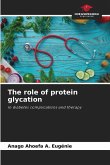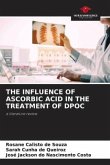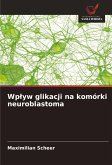High glucose levels, such as those found in diabetes mellitus, promote the glycation of proteins and lead to the formation of AGEs. These AGEs accelerate aging processes and are associated with micro- and macrovascular complications as well as neurodegenerative diseases. Many effects are receptor-dependent, with RAGE considered one of the most important interaction partners for AGEs. Treatment of Kelly-type neuroblastoma cells with MGO, the most potent precursor of AGE formation, did not result in a reduction in cell viability. After treatment, increased formation of CML and Western blot was observed. Furthermore, glycated cells showed clear signals for CML and RAGE in flow cytometry. Glycation of matrix proteins led to a reduction in adhesion to laminin in RTCA, but had no effect on fibronectin and collagen IV. In addition, an increased migration rate was detected due to glycation of the cells.
Bitte wählen Sie Ihr Anliegen aus.
Rechnungen
Retourenschein anfordern
Bestellstatus
Storno








